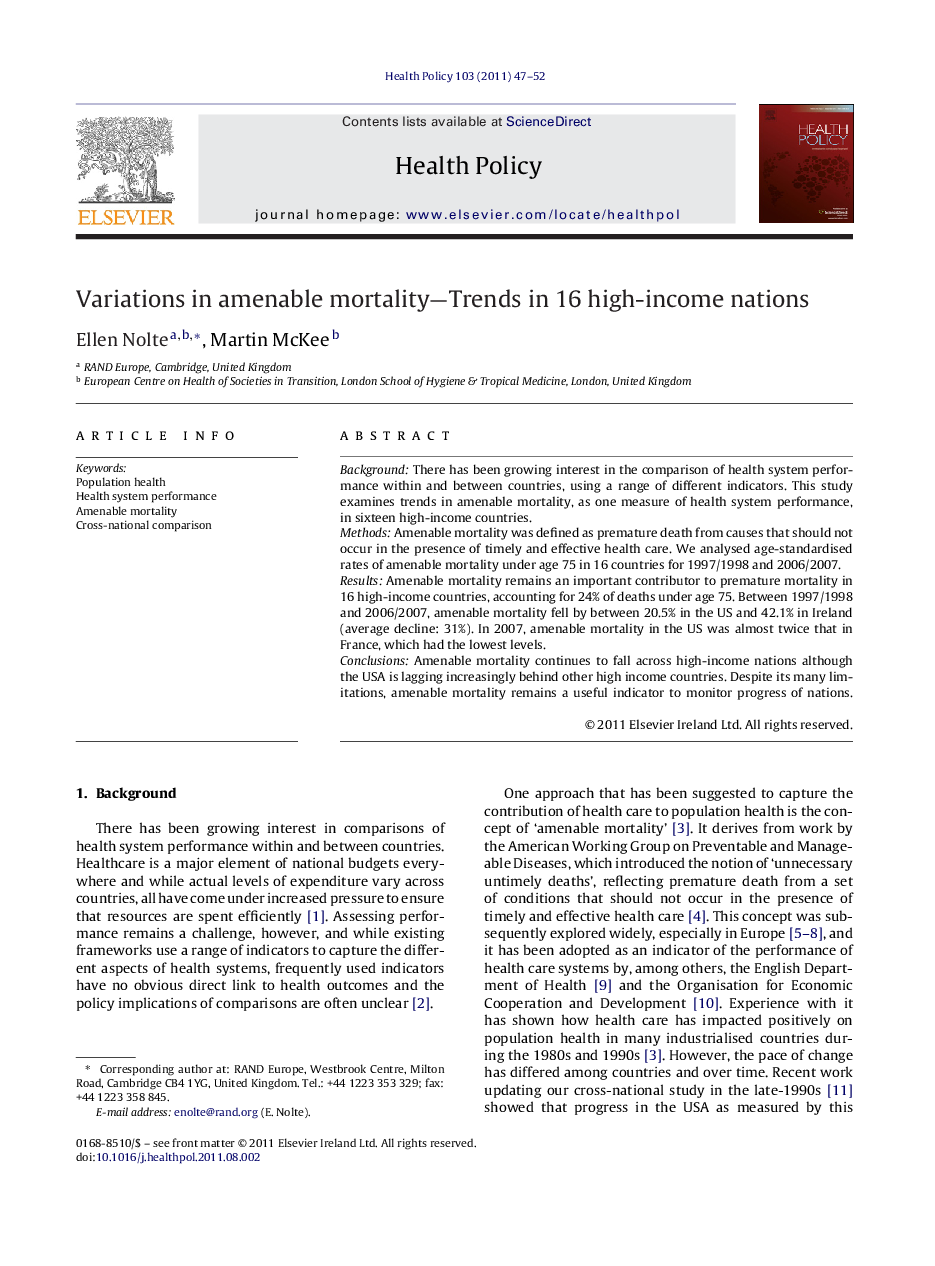| Article ID | Journal | Published Year | Pages | File Type |
|---|---|---|---|---|
| 4198094 | Health Policy | 2011 | 6 Pages |
BackgroundThere has been growing interest in the comparison of health system performance within and between countries, using a range of different indicators. This study examines trends in amenable mortality, as one measure of health system performance, in sixteen high-income countries.MethodsAmenable mortality was defined as premature death from causes that should not occur in the presence of timely and effective health care. We analysed age-standardised rates of amenable mortality under age 75 in 16 countries for 1997/1998 and 2006/2007.ResultsAmenable mortality remains an important contributor to premature mortality in 16 high-income countries, accounting for 24% of deaths under age 75. Between 1997/1998 and 2006/2007, amenable mortality fell by between 20.5% in the US and 42.1% in Ireland (average decline: 31%). In 2007, amenable mortality in the US was almost twice that in France, which had the lowest levels.ConclusionsAmenable mortality continues to fall across high-income nations although the USA is lagging increasingly behind other high income countries. Despite its many limitations, amenable mortality remains a useful indicator to monitor progress of nations.
